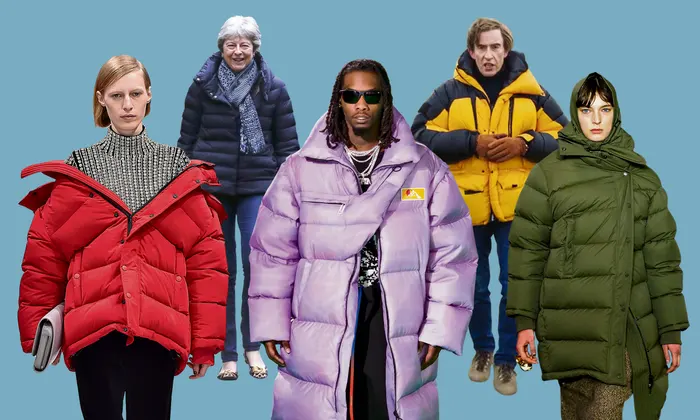E-Commerce’s Transformative Impact on Fashion Trends
The fashion industry has been significantly shaped by the rise of e-commerce. This digital revolution has influenced everything from consumer behavior to the pace at which fashion trends emerge and evolve. In this article, we explore the profound impact of e-commerce on fashion trends, highlighting key aspects of this transformation.
1. Accessibility and Global Reach
- Expanded Reach: E-commerce platforms have democratized fashion, making it accessible to a global audience. Fashion trends now transcend geographical boundaries and are embraced by diverse cultures and regions.
- Instant Access: Shoppers can explore and purchase fashion items from anywhere, anytime, reducing the limitations of physical stores’ operating hours and locations.
2. Accelerated Trend Cycles
- Rapid Dissemination: E-commerce platforms allow fashion trends to spread quickly. Once a trend is spotted on the runway or on a celebrity, it can be available for purchase online within days.
- Fast Fashion: The “fast fashion” model, popularized by e-commerce brands, emphasizes quick production and turnover of trendy items, enabling consumers to stay ahead of the curve.
3. Data-Driven Insights
- Consumer Data: E-commerce platforms collect vast amounts of data on consumer preferences and behavior. This data is invaluable for fashion brands and retailers, enabling them to tailor products to consumer demands.
- Personalization: The availability of data allows e-commerce platforms to offer personalized recommendations, helping shoppers discover fashion trends that align with their tastes.
4. Influencer Marketing and Social Media
- Influencer Impact: E-commerce and social media have given rise to influencer marketing. Influencers can rapidly popularize fashion trends, driving sales and brand awareness.
- Visual Platforms: Instagram, Pinterest, and TikTok have become hubs for showcasing and discovering fashion trends. They influence not only what people wear but also how they style outfits.
5. Sustainable and Ethical Fashion
- Transparency: E-commerce has facilitated greater transparency in the fashion supply chain. Consumers can now make more informed choices regarding sustainable and ethical fashion.
- Emergence of Eco-Friendly Brands: E-commerce has allowed eco-friendly and sustainable fashion brands to gain visibility and reach a broader audience.
6. Innovative Retail Models
- Direct-to-Consumer (DTC): Many fashion brands now operate DTC e-commerce platforms, allowing them to connect directly with consumers, gather feedback, and respond to changing trends swiftly.
- Subscription Services: Subscription-based fashion services, where consumers receive curated clothing and accessories regularly, have gained traction, reshaping how people shop for and discover new trends.
7. Virtual Try-On and Augmented Reality
- Virtual Fitting Rooms: E-commerce platforms are implementing virtual try-on features and augmented reality tools, allowing shoppers to visualize how clothing will fit and look on them.
- Enhanced Shopping Experience: These technologies enhance the online shopping experience, making it more interactive and enjoyable, while also reducing the guesswork associated with sizing and fit.
8. Customer Reviews and Social Proof
- User-Generated Content: E-commerce platforms encourage customer reviews and user-generated content. Positive reviews and photos of others wearing items influence purchasing decisions and trends.
- Authenticity: Fashion trends are increasingly driven by authentic user experiences and endorsements rather than traditional advertising.
9. Sustainable Consumption
- Second-Hand Market: E-commerce has fostered the growth of the second-hand fashion market. Thrifting and buying pre-owned items have become trendy and eco-conscious choices.
- Circular Fashion: Concepts like clothing rental and clothing resale platforms are changing the way consumers view and engage with fashion, promoting a more sustainable and less wasteful approach.
10. Innovation in Materials and Production
- Eco-Friendly Materials: E-commerce has provided a platform for brands to showcase and sell clothing made from innovative, sustainable materials, contributing to changing fashion trends toward eco-friendliness.
- On-Demand Production: Some e-commerce brands are adopting on-demand production models, reducing waste by only producing items once they are ordered.
In conclusion, e-commerce has had a profound and multifaceted impact on fashion trends. It has democratized access to fashion, accelerated trend cycles, empowered consumers through data and personalization, and revolutionized marketing through influencer collaborations and social media. Additionally, it has played a pivotal role in driving sustainability initiatives and reshaping how fashion is produced and consumed. As e-commerce continues to evolve, its influence on fashion trends will remain dynamic and transformative.


